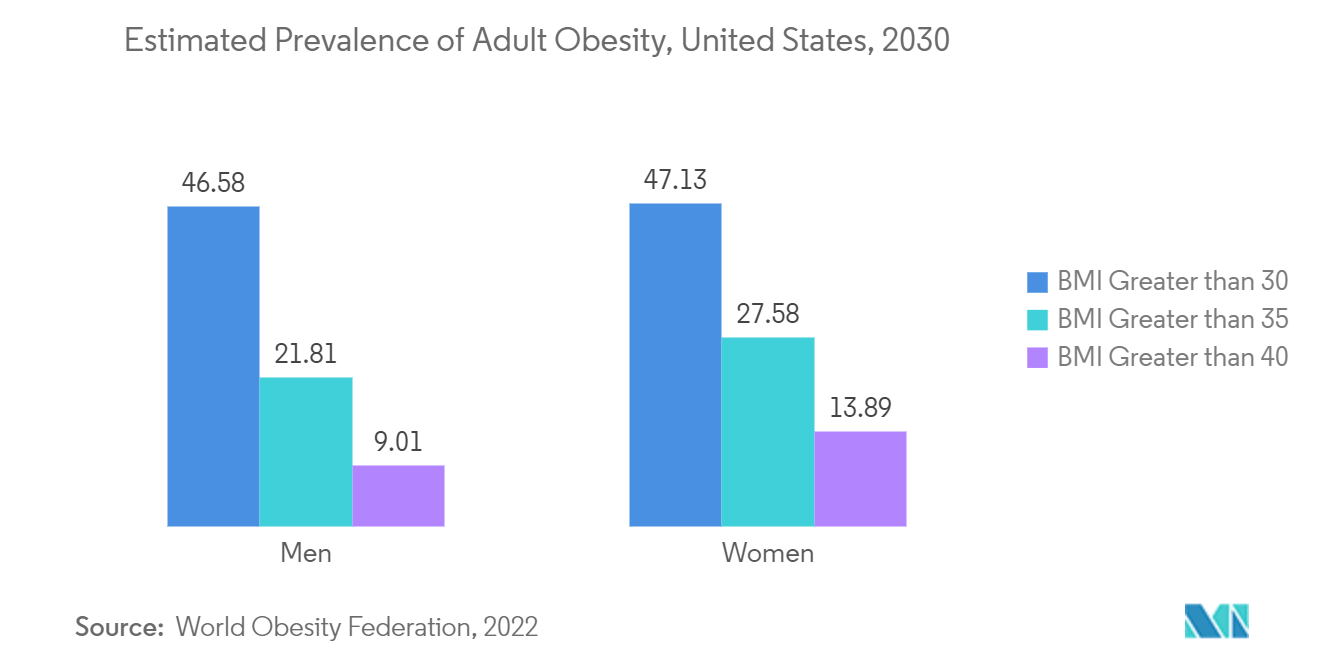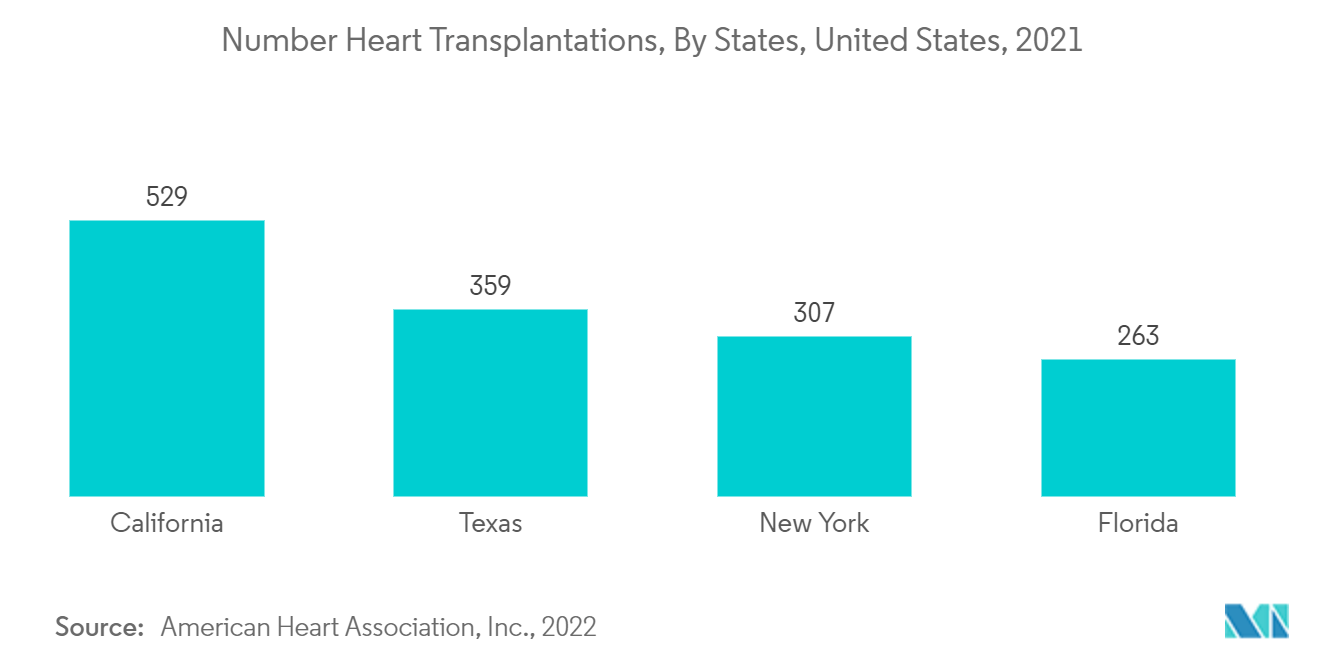Market Trends of United States General Surgical Devices Industry
Laparoscopic Devices is Expected to have a Significant Share in the Market
Laparoscopy is a type of surgery in which small incisions are made in the body. A laparoscope and other instruments are used for diagnosis and treatment without making a large incision. Compared to traditional open surgery, laparoscopic procedures often result in less pain, a shorter recovery, and less scarring. The increasing number of product approvals and product launches are expected to drive the segment's growth. For instance, in September 2022, Xenocor received US FDA approval for the enhanced version of its saberscope, a single-use laparoscope. In another instance, in November 2021, Shanghai MicroPort MedBot (Group) Co. Ltd launched DFVision 3D electronic laparoscope.
Bariatric or weight loss surgery is one of the significant laparoscopic procedures for treating obesity. During this procedure, the stomach size is reduced by removing some parts of the stomach or using a gastric band. Increasing obesity rates among children and adolescents are witnessed worldwide, leading to several young patients undergoing bariatric surgery. The increasing number of bariatric surgical procedures will likely raise the demand for laparoscopic devices. For instance, as per the WHO, in 2021, obesity had almost increased three-fold since 1975. In the 5-19 age bracket, obesity increased from less than 1% to 7% over the same period. According to the CDC, from 1999 through March 2020, the prevalence of obesity in the United States increased from 30.5% to 41.9%. During the same period, the prevalence of severe obesity increased from 4.7% to 9.2%.
Thus, the country's high prevalence of obesity is anticipated to drive the growth of bariatric surgery, thus driving the segment's growth.

Cardiology is Expected to have a Significant Share in the Market
There is an increasing burden of cardiovascular diseases in the United States. According to a CDC report updated in October 2022, in the United States, about 20.1 million adults aged 20 years and above have coronary artery disease, accounting for about 7.2%. Furthermore, according to the same source, approximately 805,000 people in the United States have a heart attack yearly. As per the New York State Department of Health, an estimated 7.3% of adults in New York State reported they had angina/coronary heart disease, heart attack, or stroke in 2020. Furthermore, according to the same source, about 18.9% of the New York population aged 65 and older reported having some cardiovascular disease in 2020.
There are several types of cardiology surgeries, including CABG, insertion of a pacemaker or an implantable cardioverter defibrillator (ICD), heart valve repair or replacement, maze surgery, aneurysm repair, heart transplant, insertion of a ventricular assist device (VAD) or total artificial heart (TAH), and transcatheter structural heart surgery, among others. In recent years, significant progress has been made in developing and adopting minimally invasive techniques in cardiac surgery. For instance, in February 2021, Orlando Health, a network of community and specialty hospitals based in Orlando, Florida, launched a robotic cardiac surgery program providing robotic-assisted surgery for structural and valve diseases.
Thus, the country's high prevalence of cardiology diseases increases the demand for minimally invasive surgeries, which will likely drive the United States general surgical devices market.


